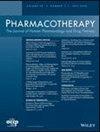Antiviral influenza treatments and hemorrhage-related adverse events in the United States Food and Drug Administration Adverse Event Reporting System (FAERS) database.
IF 2.9
3区 医学
Q2 PHARMACOLOGY & PHARMACY
引用次数: 0
Abstract
STUDY OBJECTIVE To determine whether there is a signal for gastrointestinal (GI) or intracranial (IC) hemorrhage associated with the use of antiviral medications for influenza in the US Food and Drug Administration (FDA) Adverse Event Reporting System (FAERS) database. DESIGN Disproportionality analysis. DATA SOURCE The FAERS database was searched using OpenVigil 2.1 to identify GI and IC hemorrhage events reported between 2004 and 2022. MEASUREMENTS Antiviral medications for influenza included the following: oseltamivir, zanamivir, peramivir, and baloxavir marboxil. Hemorrhage events were identified using Standardized Medical Dictionary for Regulatory Activities (MedDRA) Queries for GI and IC hemorrhages. Reporting odds ratios (RORs) were calculated to compare the occurrence of GI and IC hemorrhage events between antiviral drugs for influenza and (i) all other medications and (ii) antibiotics. RORs were also calculated for each of the individual antiviral medications. MAIN RESULTS A total of 245 cases of GI hemorrhage and 23 cases of IC hemorrhage were identified in association with four antivirals. In comparison with all other drugs, the RORs of GI hemorrhage for oseltamivir, zanamivir, peramivir, baloxavir, and all antivirals combined were 1.17, 0.62, 4.44, 2.53, and 1.22, respectively, indicating potential variations in GI hemorrhage risk among the antivirals. In contrast, in comparison with all other drugs, the RORs of IC hemorrhage for oseltamivir (0.44), zanamivir (0.16), baloxavir (0.44), and all antivirals combined (0.41) were less than 1.0 which is consistent with no elevated risk of IC hemorrhage. CONCLUSION In this study, some signals for GI hemorrhage were observed, particularly for peramivir and baloxavir marboxil. Further investigation is warranted to better understand and evaluate the potential risks of GI hemorrhage associated with antiviral treatments for influenza.美国食品和药物管理局不良事件报告系统(FAERS)数据库中与抗病毒流感治疗和出血相关的不良事件。
研究目的:确定美国食品和药物管理局(FDA)不良事件报告系统(FAERS)数据库中是否存在与使用抗病毒药物治疗流感相关的胃肠道(GI)或颅内(IC)出血信号。数据来源使用OpenVigil 2.1搜索FAERS数据库,以确定2004年至2022年期间报告的消化道和IC出血事件。测量流感抗病毒药物包括以下药物:奥司他韦、扎那米韦、帕拉米韦和巴洛沙韦马勃西。出血事件通过标准化监管活动医学字典 (MedDRA) 对消化道和内脏出血的查询来确定。计算了报告几率比(ROR),以比较流感抗病毒药物与(i)所有其他药物和(ii)抗生素之间消化道和内腔出血事件的发生率。主要结果共发现 245 例消化道出血和 23 例 IC 出血与四种抗病毒药物有关。与所有其他药物相比,奥司他韦、扎那米韦、帕拉米韦、巴洛沙韦和所有抗病毒药物合计的消化道出血ROR分别为1.17、0.62、4.44、2.53和1.22,表明不同抗病毒药物的消化道出血风险可能存在差异。与此相反,与所有其他药物相比,奥司他韦(0.44)、扎那米韦(0.16)、巴洛沙韦(0.44)和所有抗病毒药物合计(0.41)的 IC 出血 ROR 均小于 1.0,这表明 IC 出血风险并没有升高。为了更好地了解和评估与流感抗病毒治疗相关的消化道出血的潜在风险,有必要进行进一步调查。
本文章由计算机程序翻译,如有差异,请以英文原文为准。
求助全文
约1分钟内获得全文
求助全文
来源期刊

Pharmacotherapy
医学-药学
CiteScore
7.80
自引率
2.40%
发文量
93
审稿时长
4-8 weeks
期刊介绍:
Pharmacotherapy is devoted to publication of original research articles on all aspects of human pharmacology and review articles on drugs and drug therapy. The Editors and Editorial Board invite original research reports on pharmacokinetic, bioavailability, and drug interaction studies, clinical trials, investigations of specific pharmacological properties of drugs, and related topics.
 求助内容:
求助内容: 应助结果提醒方式:
应助结果提醒方式:


